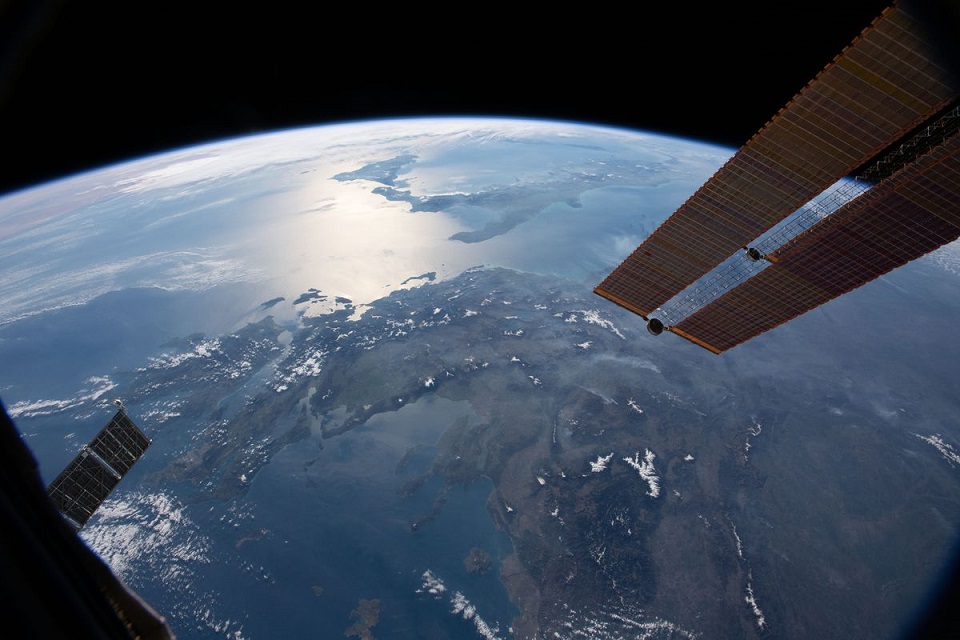Since the first human being looked up into the night sky, many questions sparked an interest in space travel. All to answer the age-old question, where did we come from? Way back in 1608, the first telescope was made, so that the lights sprawled across the heavens could be explained to the rest of the world. And since then, exploring the space around us has been a top priority to understand the origins of our universe, other planets, and hopefully one day, to find similar intelligent life.
Every single day space exploration is getting more advanced. Although we haven’t yet seen the edge of the universe, the furthest that mankind can see with the best telescope is 46.5 billion light-years. That is a staggering number, but one that we would not have known if it wasn’t for some pivotal moments like these to remember.
1957, Sputnik 1 Is Launched
Everything in the history of Earth changed the day the USSR launched Sputnik 1 into the sky. This was a major achievement for space exploration and the engineers because it was the very first man-made object to successfully leave Earth’s atmosphere. Weighing in at only about 180lb, Sputnik 1 is said to be the driving force behind space exploration.
It was a magical day for Russia because there was a race going on with America to see who could send a satellite into space first. This beach-ball-sized spacecraft effectively started a snowball effect, leading to even more great discoveries in space travel. By launching Sputnik 1 to travel the universe, the rest of the world started to look up, examine the sky and ask even bigger questions. Every human being started to question just how big the world around them was. It didn’t take long for scientists to realize that the universe is far greater than any one person can ever hope to comprehend.
1969, First Man On The Moon
Niel Armstrong is a name taught in history books and isn’t likely to be forgotten anytime soon. Apollo 11 carried Niel and Edwin “Buzz” Aldrin who were the first men to land on the moon, but Niel was the first one out of the door. Who could blame him for wanting to see what was on that surface? The mission to land on the moon was a great milestone for humans, and since then more than 500 people have been flown into space.
By successfully landing on the moon scientists were able to collect moon rocks and study them on Earth. This allowed further research to take place and we now know that the moon is almost five billion years old and there is no life to be found. We also know that the Earth and the moon were once made from the same pieces of rock. When other space debris exploded and crashed into Earth, it broke off a large chunk of rock, and so our lunar neighbor was created.
1990, Hubble Space Telescope Goes Live
Ever since the first telescope was made, engineers worked to create an even better one that could see far into the vastness of space. And so the Hubble Space Telescope was born. Just to examine what is out there, Hubble has been in operation for over 30 years and still has about another 18 years to go before it comes back down to Earth. The coolest thing about the Hubble is that it is being controlled by astronauts on Earth, remotely at 540 miles away.
Hubble sends pictures back down to Earth through radio waves. Hubble is the very reason that scientists were able to calculate the age and approximate size of the universe. This revolutionary telescope has been part of the discovery of black holes and other weird and wonderful things in the cosmos. If you are interested in knowing more about the Hubble and other spacecraft, check out thespacereport.org.
1977, Man Attempts To Contact Alien Life
The Voyager spacecraft was sent into space in 1977 with the sole purpose to examine and study the planets in our solar system, mostly Jupiter and Saturn. But the real interesting part is what was sent out into the universe attached to the Voyager. A message for anyone else that may be out there, the Golden Record. It was designed to have specific messages in case any alien civilization were to stumble upon it. It is quite literally a gold plate that reads “The Sounds of Earth”, and it contains various songs, pictures, and thoughts from different people and parts of the world.
Possibly the most important piece of information was what Carl Sagan and various other NASA associates put on the cover of the gold record. There are pictures to indicate where Earth can be located in the Milky Way galaxy by identifying 14 different pulsars. We may not live to see when other intelligent life finds that record, but at least the story of humanity is out there to be discovered. It may be 100 years from now, or a few trillion, but sometime in the future, that record will be found.
The Inhabitation Of Mars
Once mankind knew that traveling to the moon was possible, it was only a matter of time before we started exploring other nearby planets. Mars just so happens to be so similar to Earth, it is possible that at one point in history, it housed life. One of the most pivotal moments in space exploration is rather made of many moments from many spacecraft over the decades.
As it stands there are 11 different rovers and orbiters currently on Mars, constantly communicating with Earth, each one of them with a different purpose. Some study atmospheric gases on Mars which may be associated with other forms of life, while others examine a different part of the planet’s rock layers.
If you think about it, humanity managed to accomplish all of these things in just 65 years. Imagine what new pivotal moments we’ll soon be seeing as scientists, engineers, and astronauts work to further understand this complex home of ours.








No Comments